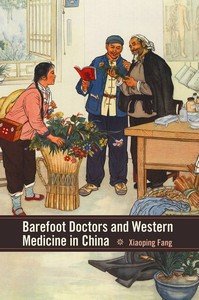
版主:感謝黃文儀博士提供的書訊,有關赤腳醫生的研究。
Xiaoping
Fang. Barefoot Doctors and Western Medicine in China. Rochester,
NY: University
of Rochester Press, 2012.
13 Digit IBSN:
9781580464338. Pages: 310.
Further
information:
http://www.urpress.com/store/viewItem.asp?idProduct=14039
Summary:
In 1968, at
the height of the Cultural Revolution, the Chinese Communist
Party endorsed
a radical new system of health-care delivery for the rural
masses. Soon
every village had at least one barefoot doctor to provide
basic medical
care, creating a national network of health-care services for
the very first
time. The barefoot doctors were portrayed nationally and
internationally
as revolutionary heroes, wading undaunted through rice
paddies to
bring effective, low-cost care to poor peasants.
This book is
the first comprehensive study to look beyond the nostalgia
dominating
present scholarship on public health in China and offer a
powerful and
carefully contextualized critique of the prevailing views on
the role of
barefoot doctors, their legacy, and their impact. Drawing on
primary
documents from the Cultural Revolution and personal interviews with
patients and
doctors, I examine the evidence within the broader history of
medicine in
revolutionary and postreform China. I find that rather than
consolidating
traditional Chinese medicine, as purported by government
propaganda,
the barefoot doctor program introduced modern Western medicine
to rural
China, effectively modernizing established methods and forms of
care. As a
result, this volume retrieves from potential oblivion a critical
part of the
history of Western medicine in China.
Contents:
1 Introduction
2 Village
Healers, Medical Pluralism, and State Medicine
3
Revolutionizing Knowledge Transmission Structures
4
Pharmaceuticals Reach the Villages
5 Healing
Styles and Medical Beliefs: The Consumption of Chinese and
Western
Medicines
6 Relocating
Illness: The Shift from Home Bedside to Hospital Ward
7 Group
Identity, Power Relationships, and Medical Legitimacy
8 Conclusion
9 Appendixes
10 The
Organization of the Three-Tiered Medical System in Rural China,
1968-83
11 Common
Medicines in Chinese Villages during the 1960s-70s




 留言列表
留言列表

 {{ article.title }}
{{ article.title }}